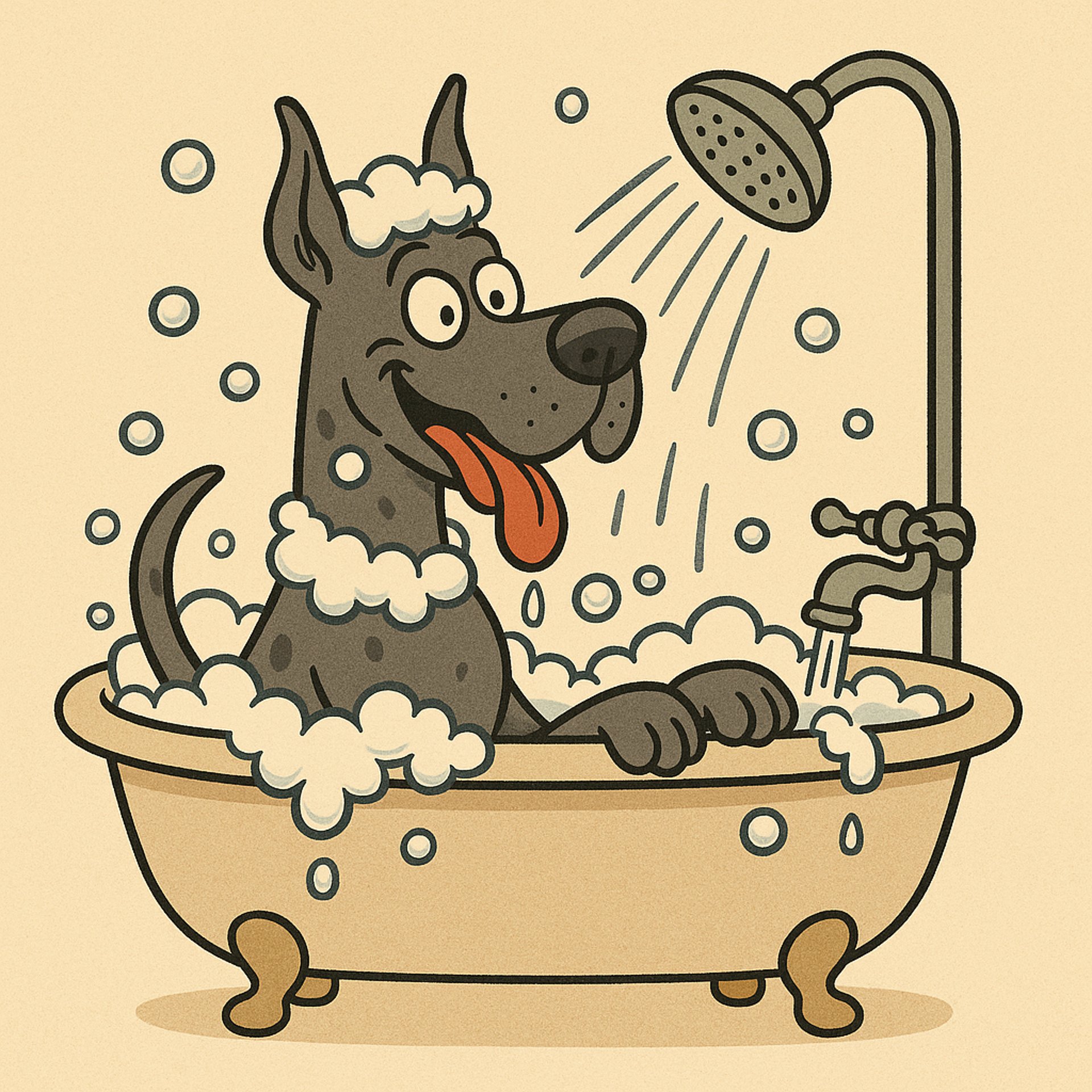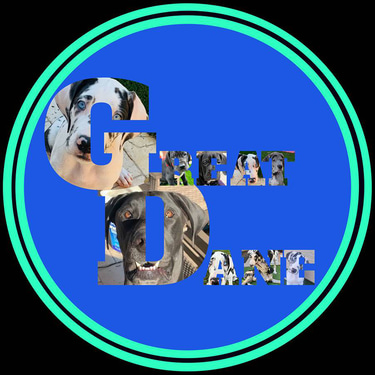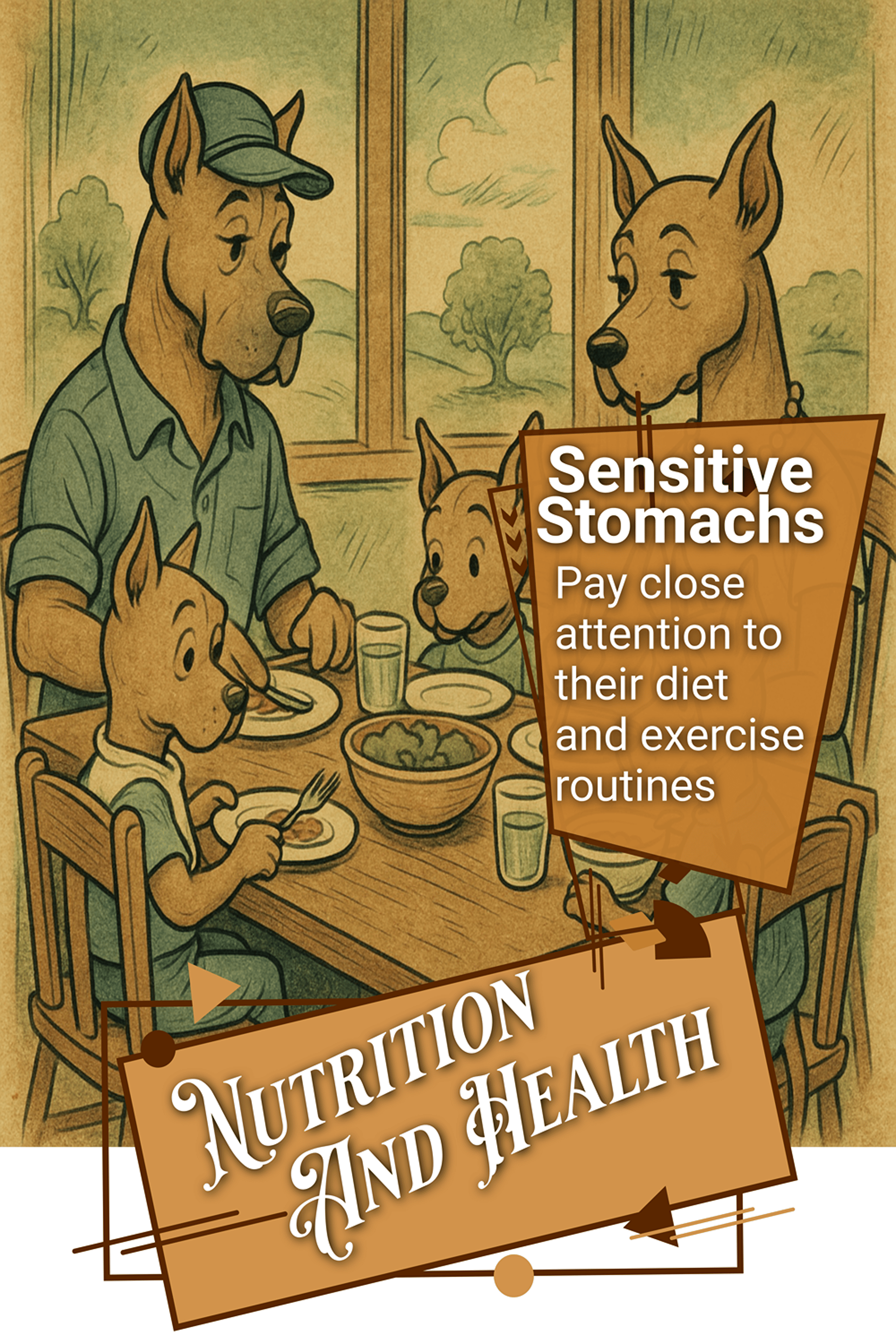
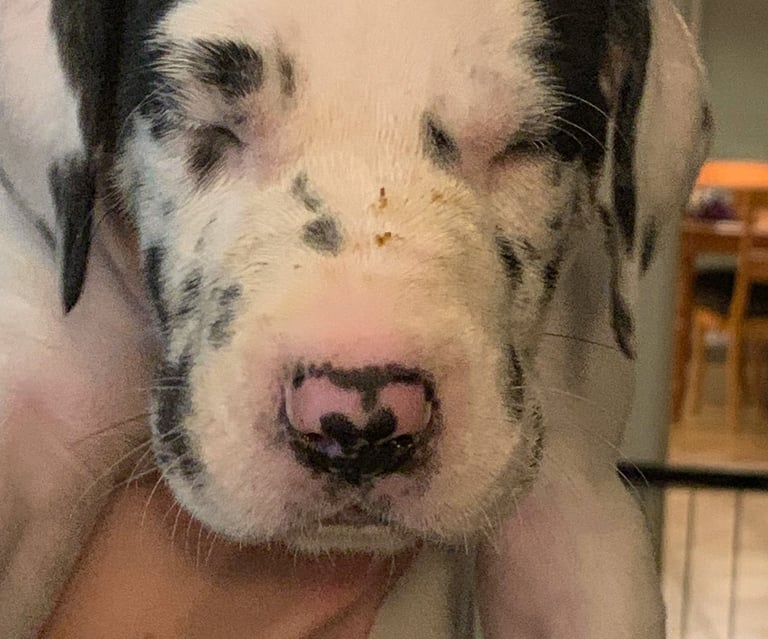

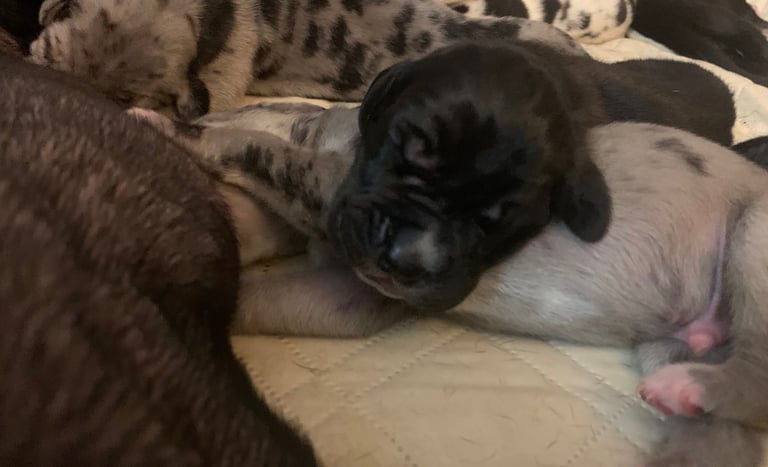

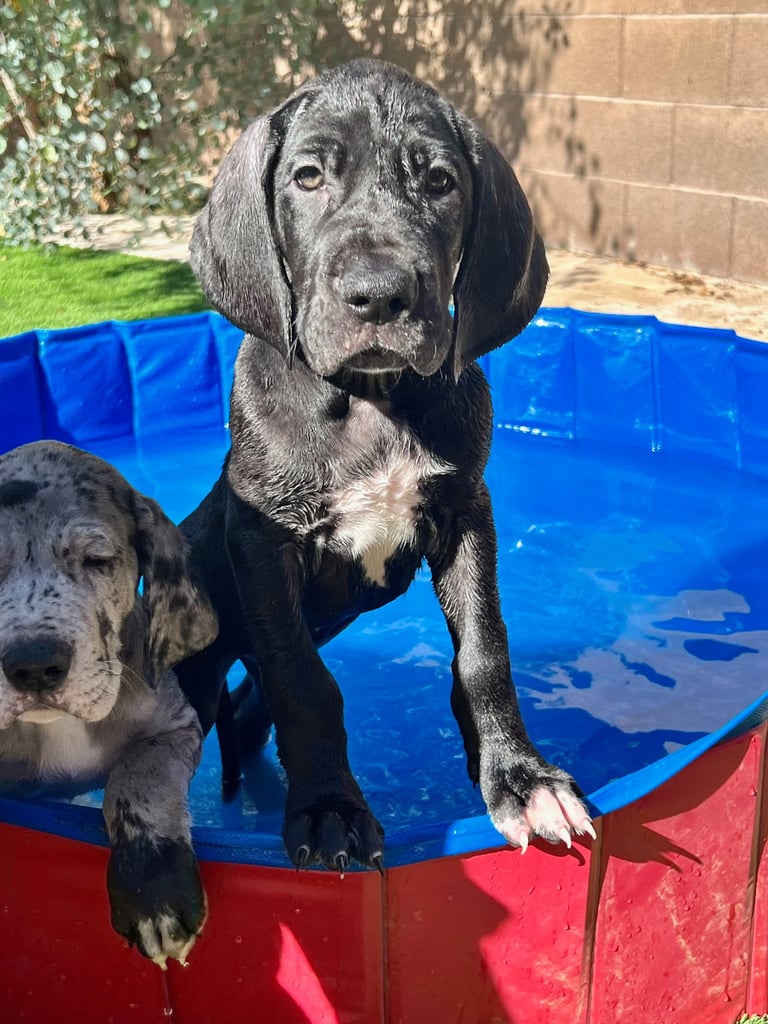

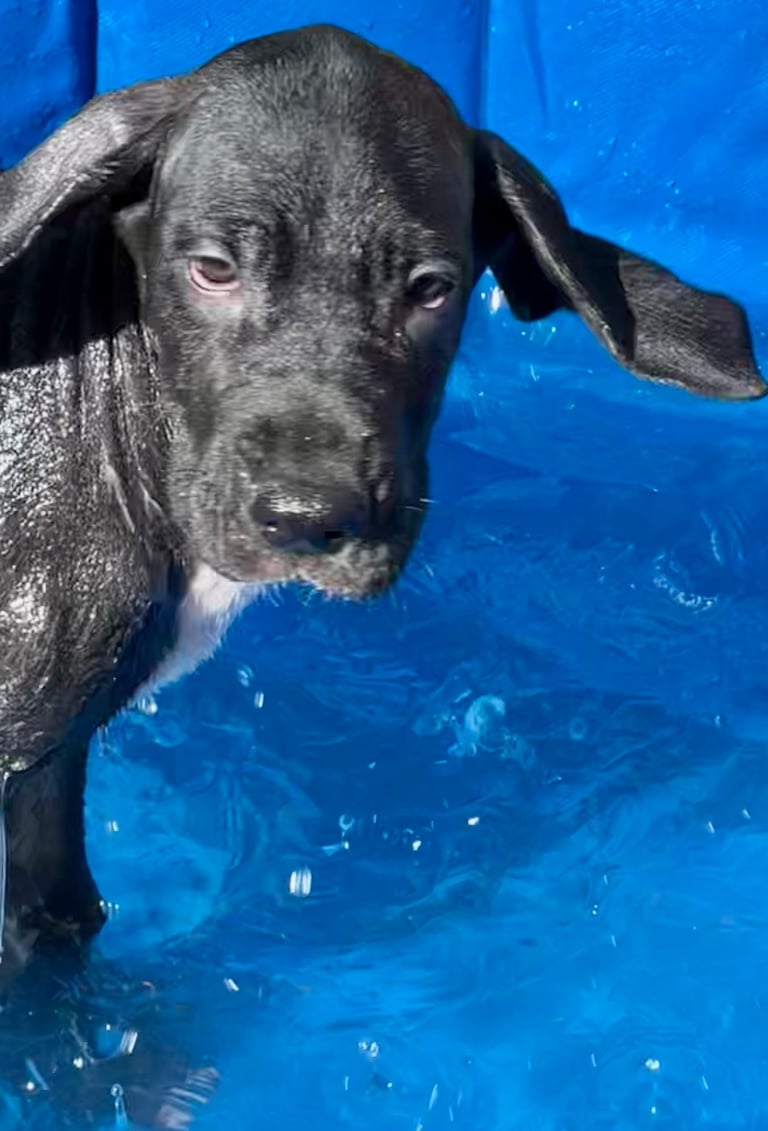

1. Nutrition
Puppy-specific large/giant breed formula: Choose a high-quality kibble formulated for giant breeds to support slow, steady growth and avoid orthopedic issues.
Calcium/phosphorus balance: Critical for bone development. Avoid adding extra calcium unless directed by your vet.
Feeding schedule:
8–12 weeks: 3–4 small meals/day
3–6 months: 3 meals/day
6+ months: Transition to 2 meals/day
Avoid high-calorie "puppy" food for small breeds — they grow too fast and it increases risk of and panosteitis.
2. Growth and Exercise
Controlled exercise: Short, supervised walks and gentle play. Avoid:
Stairs
Jumping on/off furniture
Running on hard surfaces
Too much impact too early can lead to joint problems like hip/elbow dysplasia or HOD (Hypertrophic Osteodystrophy).
3. Training and Socialization
Start early: Great Danes are smart and eager to please, but consistency is key.
Positive reinforcement: Use treats, praise, and gentle corrections.
Socialization: Expose them to people, dogs, and new environments early (after vaccinations).
Basic commands: Sit, stay, come, leash training — start young before they become 150 lbs!
4. Health and Vet Care
Vaccinations: Follow your vet’s schedule (typically begins at 6–8 weeks).
Deworming: Important for fast-growing puppies.
Preventatives: Flea/tick and heartworm meds.
Watch for:
Bloat/GDV: Great Danes are at high risk. Feed multiple small meals, avoid exercise right after eating.
Hip/elbow dysplasia: Genetics and nutrition are key factors.
Spay/neuter: Often delayed until 12–18 months to allow proper growth.
5. Grooming & Hygiene
Short coat: Weekly brushing is enough.
Bathing: Every few months or as needed.
Nail trims: Every 2–3 weeks (start early so they get used to it).
Ear cleaning and dental care: Important to start while they’re young.
6. Housing and Comfort
Soft, supportive bed: Helps growing joints.
Crate training: Use a large crate with dividers to grow into it. Creates a safe space and helps with housebreaking.
Avoid cold/hard surfaces: These can be rough on developing joints. Hard floors can make it difficult for Great Danes to walk
and play. Area Rugs are a good investment. Make sure to get something nonslip to put underneath as well. We would put the rug in front of
where we spent a lot of time, especially since Great Danes are so "clingy."
7. Mental Enrichment
Toys: Use sturdy chew toys, puzzle feeders, and safe bones.
Bonding time: These dogs are people-oriented. They crave affection and time with their family.
Would you like a printable version of this or a daily care checklist?
🐾 Great Dane Puppy Care Guide
